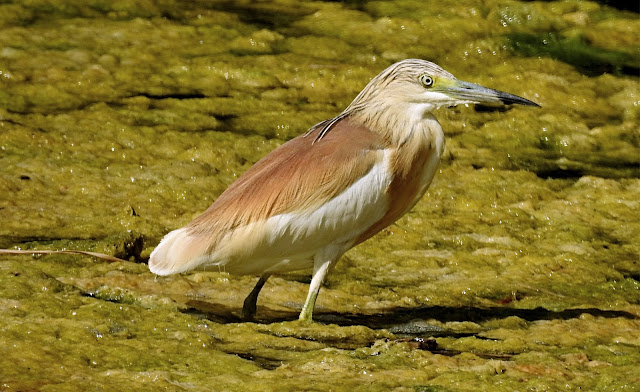The speckled wood (Pararge aegeria) is a butterfly found in and on the borders of woodland areas throughout much of the Palearctic realm. The species is subdivided into multiple subspecies, including Pararge aegeria aegeria, Pararge aegeria tircis, Pararge aegeria oblita, and Pararge aegeria insula. The color of this butterfly varies between subspecies. The existence of these subspecies is due to variation in morphology down a gradient corresponding to a geographic cline. The background of the wings ranges from brown to orange, and the spots are either pale yellow, white, cream, or a tawny orange. The speckled wood feeds on a variety of grass species. The males of this species exhibit two types of mate locating behaviors: territorial defense and patrolling. The proportion of males exhibiting these two strategies changes based on ecological conditions. The monandrous female must choose which type of male can help her reproduce successfully. Her decision is heavily influenced by environmental conditions.
The average wingspan of both males and females is 5.1 cm (2 in), although males tend to be slightly smaller than females. Furthermore, males possess a row of grayish-brown scent scales on their forewings that is absent in the females. Females have brighter and more distinct markings than males. The subspecies P. a. tircis is brown with pale yellow or cream spots and darker upperwing eyespots. The subspecies P. a. aegeria has a more orange background and the hindwing underside eyespots are reddish brown rather than black or dark gray. The two forms gradually intergrade into each other. Subspecies P. a. oblita is a darker brown, often approaching black with white rather than cream spots. The underside of its hindwings has a marginal pale purple band and a row of conspicuous white spots. The spots of subspecies P. a. insula are a tawny orange rather than a cream color. The underside of the forewings has patches of pale orange, and the underside of the hindwing has a purple-tinged band. Although there is considerable variation with each subspecies, identification of the different subspecies is manageable.
The morphology of this butterfly varies as a gradient down its geographic cline from north to south. The northern butterflies in this species have a bigger size, adult body mass, and wing area. These measurements decrease as one moves in a southerly direction in the speckled wood's range. Forewing length on the other hand increases moving in a northerly direction. This is due to the fact that in the cooler temperatures of the northern part of this butterfly's range, the butterflies need larger forewings for thermoregulation. Finally, the northern butterflies are darker than their southern counterpart, and there is a coloration gradient, down their geographical cline.
The speckled wood occupies a diversity of grassy, flowery habitats in forest, meadow steppe, woods, and glades. It can also be found in urban areas alongside hedges, in wooded urban parks, and occasionally in gardens. Within its range the speckled wood typically prefers damp areas. It is generally found in woodland areas throughout much of the Palearctic realm. P. a. tircis is found in northern and central Europe, Asia Minor, Syria, Russia, and central Asia, and the P. a. aegeria is found in southwestern Europe and North Africa. Two additional subspecies are found within the British Isles: the Scottish speckled wood (P. a. oblita) is restricted to Scotland and its surrounding isles, and the Isles of Scilly speckled wood (P. a. insula) is found only on the Isles of Scilly. P. a. tricis and P. a. aegeria gradually intergrade into each other.


%2020.jpg)
%2021.jpg)















%2020.jpg)
%2021.jpg)


%2010.jpg)
%20(Netta%20rufina)%2010.jpg)
%2010.jpg)




















%20(Anas%20platyrhynchos)%2010.jpg)
%20(Passer%20domesticus)%2010.jpg)
%2010.jpg)
%2011.jpg)
%2010.jpg)